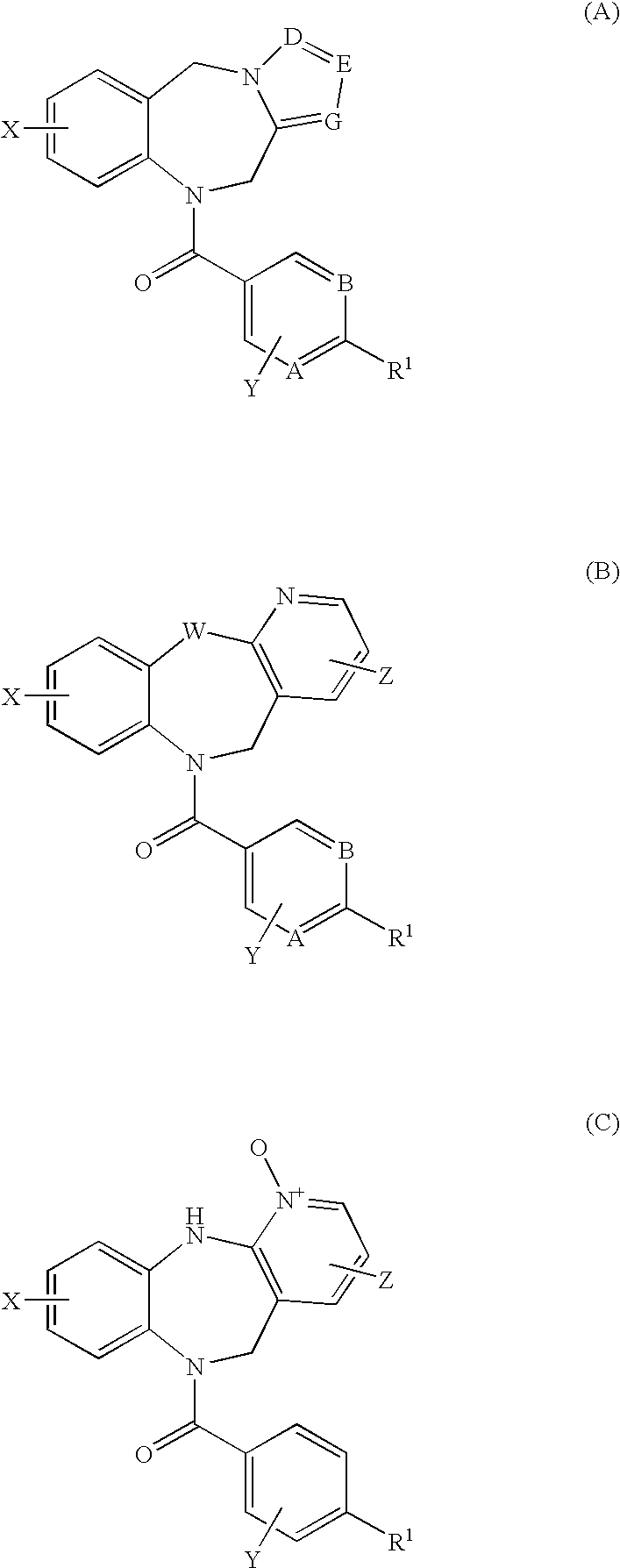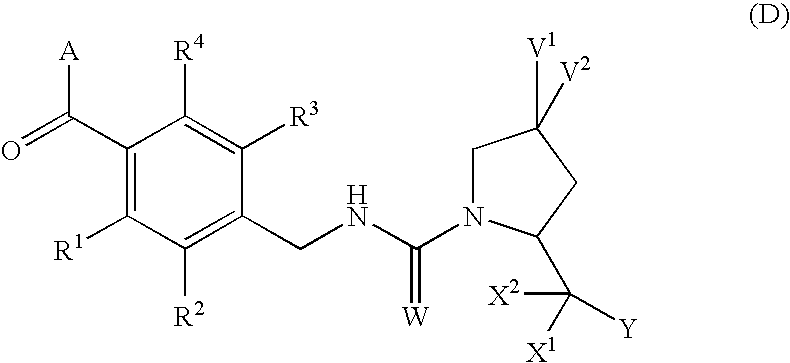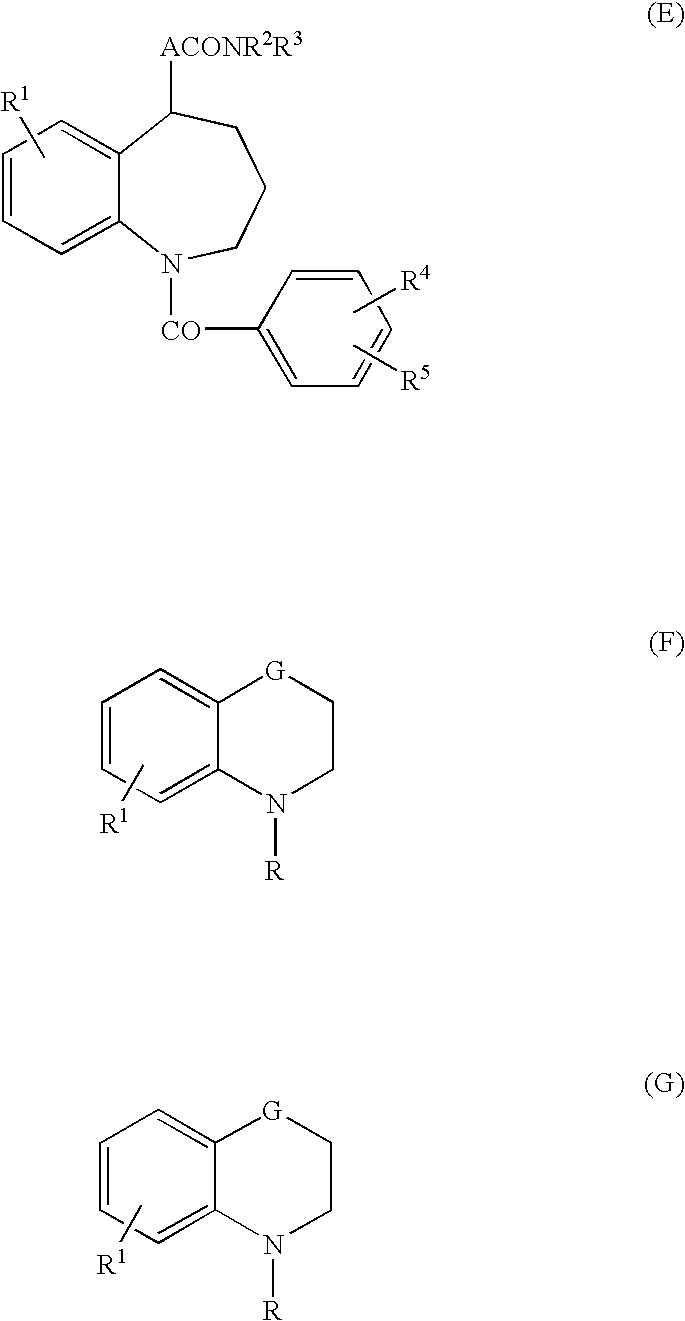4,4-difluoro-1,2,3,4-tetrahydro-5H-1-benzazepine derivatives or salts thereof
a technology of benzazepine and difluorobenzazepine, which is applied in the field of new drugs, can solve the problems of high cost of desmopressin formulation, low biological availability of desmopressin oral agents, and inability to take a long time between medicines, and achieves low inhibition effect, good anti-inflammatory effect, and good anti-inflammatory
- Summary
- Abstract
- Description
- Claims
- Application Information
AI Technical Summary
Benefits of technology
Problems solved by technology
Method used
Image
Examples
reference example 1
[0200]20.85 g of methyl 2-chloro-4-fluorobenzoate were dissolved in 150 ml of N-methylpyrrolidone, 30.68 g of potassium carbonate and 9.38 ml of 3-methylpyrazole were added thereto, and the mixture was stirred at 120° C. for 3 hours. Additionally, thereto was added 1.79 ml of 3-methylpyrazole, and the mixture was stirred at 120° C. for 3 hours. The reaction solution was cooled, mixed with water, and extracted with EtOAc. The organic layer was washed with water and brine, and then dried over magnesium sulfate. The solvent was evaporated, and then the residue was purified by silica gel column chromatography (hexane-EtOAc (20:1)) to obtain 9.25 g of methyl 2-chloro-4-(3-metyl-1H-pyrazol-1-yl)benzoate.
[0201]The compounds of Reference Examples 2–40 were synthesized in the same manner as described in Reference Example 1.
reference example 41
[0202]2.0 g of methyl 4-amino-2-chlorobenzoate were dissolved in 10 ml of acetic acid, 2.0 ml of 2,5-dimethoxytetrahydrofuran were added thereto, and the mixture was heated under reflux for 15 minutes. After cooling the reaction solution, the solvent was evaporated. The obtained residue was mixed with EtOAc and saturated NaHCO3 aq. and extracted. The organic layer was washed with brine, and dried over sodium sulfate anhydride. After evaporating the solvent, the residue was purified by silica gel column chromatography (hexane-EtOAc (4:1)) to obtain 2.1 g of methyl 2-chloro-4-(1H-pyrrol-1-yl)benzoate.
[0203]The compound of Reference Example 42 was synthesized in the same manner as described in Reference Example 41.
reference example 43
[0204]2.0 g of methyl 4-bromo-2-methylbenzoate were dissolved in 20 ml of toluene, and 1.08 ml of pyrrolidine, 4.0 g of cesium carbonate, 200 mg of tris(dibenzylideneacetone)-dipalladium (0) and 200 mg of (R)-(+)-2,2′-bis(diphenylphosphino)-1,1′-binaphthyl were added thereto, and then the mixture was heated under reflux for 6 hours. The reaction solution was cooled, mixed with water and EtOAc, and extracted. The organic layer was washed with water and brine, and dried over anhydrous sodium sulfate. After evaporating the solvent, the residue was purified by silica gel column chromatography (hexane-EtOAc (25:1)) to obtain 0.784 g of methyl 2-methyl-4-pyrrolidin-1-ylbenzoate.
[0205]The compound of Reference Example 44 was synthesized in the same manner as described in Reference Example 43.
PUM
| Property | Measurement | Unit |
|---|---|---|
| dissociation coefficient | aaaaa | aaaaa |
| fluorescent wavelength | aaaaa | aaaaa |
| fluorescent wavelength | aaaaa | aaaaa |
Abstract
Description
Claims
Application Information
 Login to View More
Login to View More - R&D
- Intellectual Property
- Life Sciences
- Materials
- Tech Scout
- Unparalleled Data Quality
- Higher Quality Content
- 60% Fewer Hallucinations
Browse by: Latest US Patents, China's latest patents, Technical Efficacy Thesaurus, Application Domain, Technology Topic, Popular Technical Reports.
© 2025 PatSnap. All rights reserved.Legal|Privacy policy|Modern Slavery Act Transparency Statement|Sitemap|About US| Contact US: help@patsnap.com



